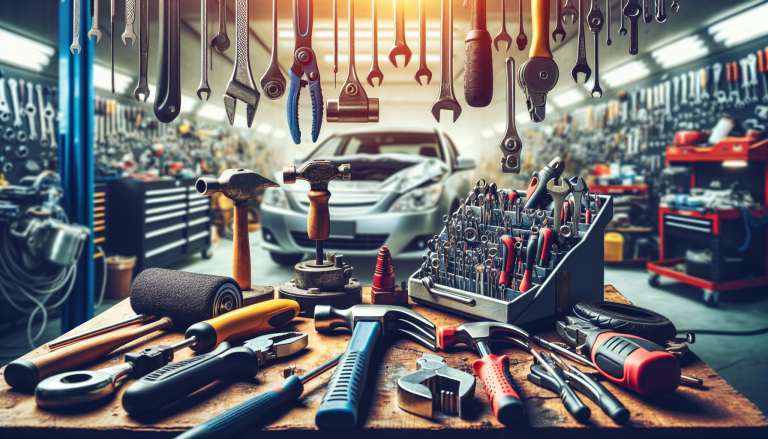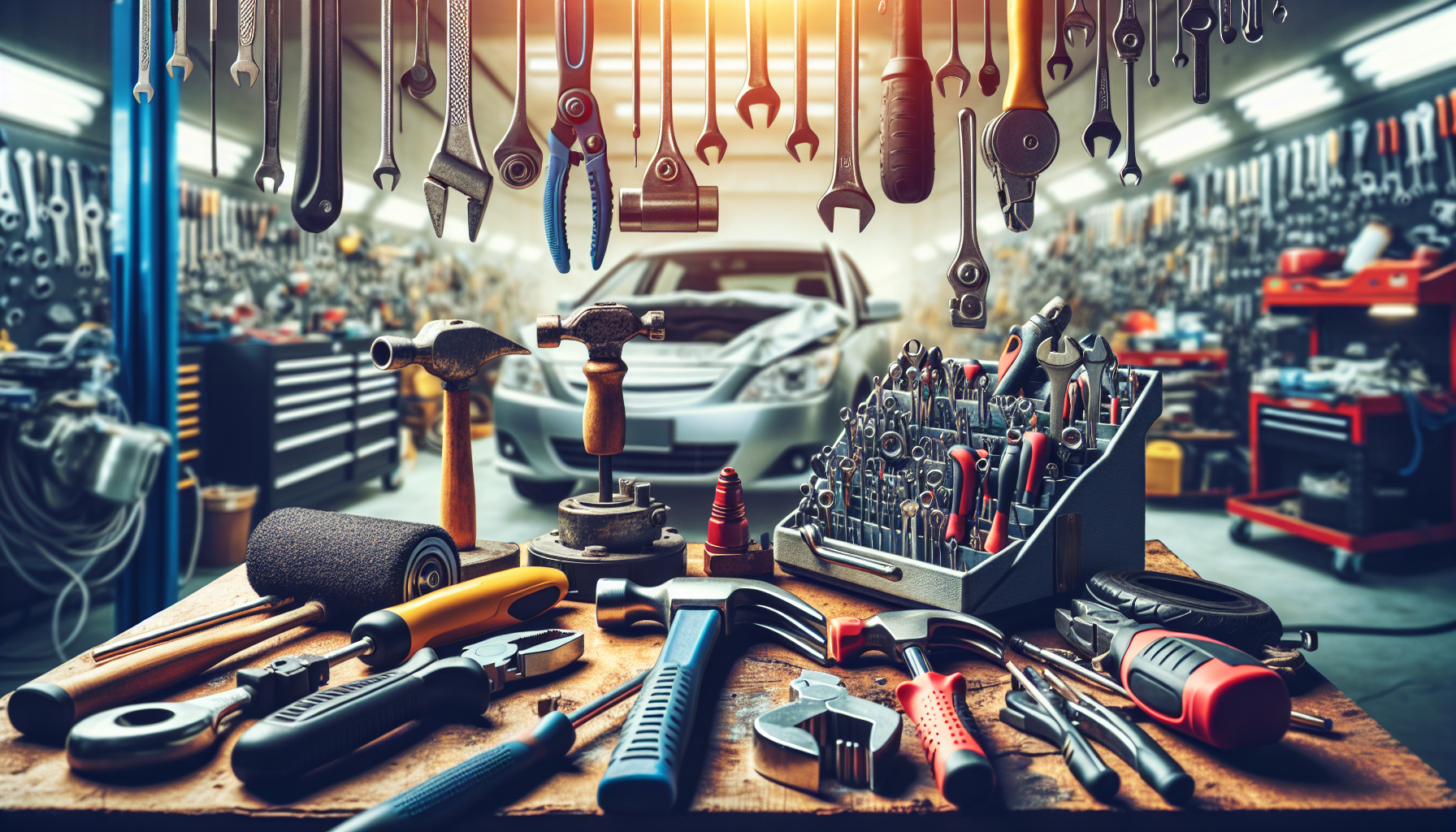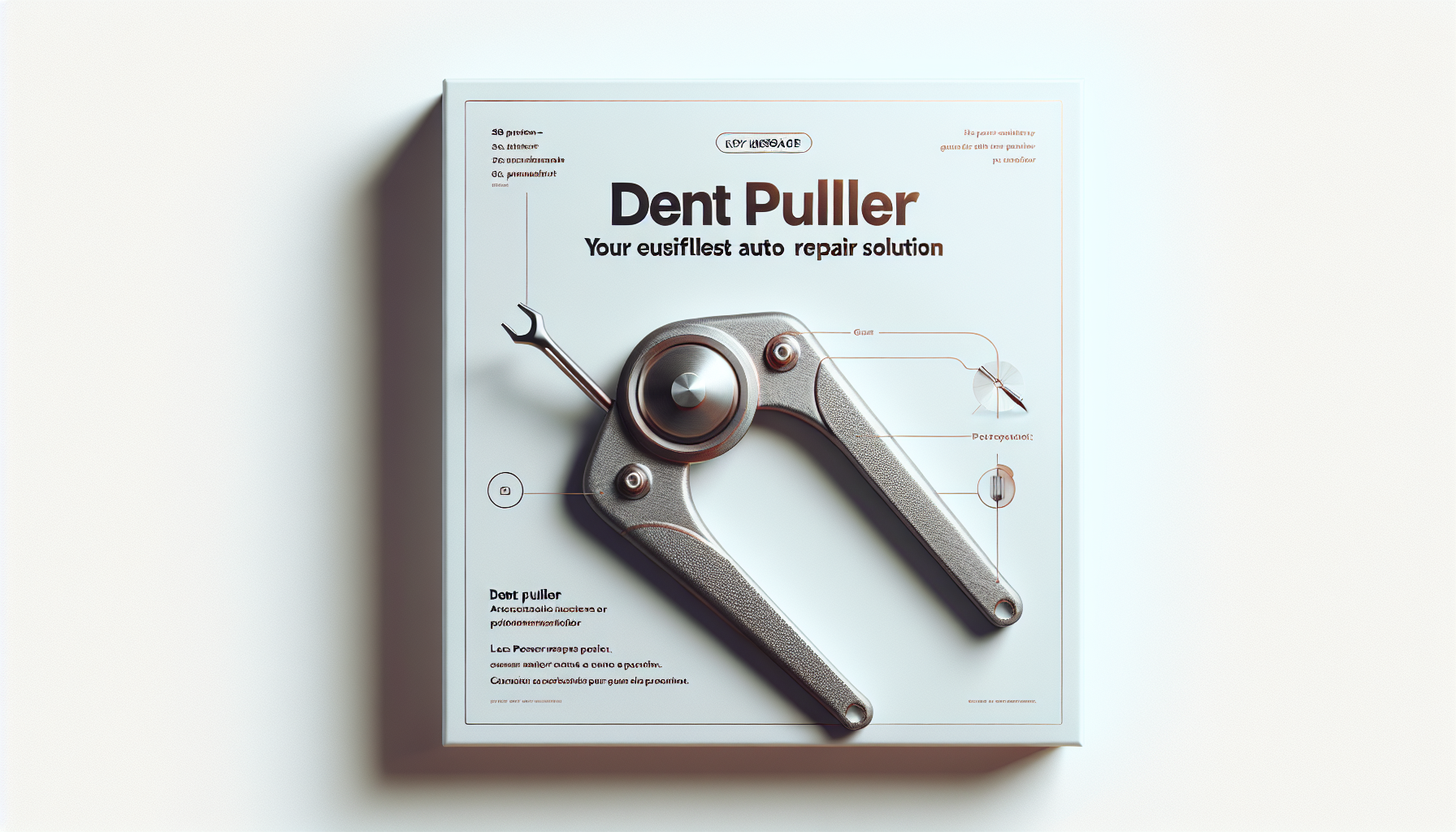Mastering Dent Repair with the Right Tools: A DIY Guide
As a seasoned DIY auto body repair enthusiast, I know the importance of having the right tools for the job. When it comes to tackling dents and dings, having the proper equipment can make all the difference in achieving professional-looking results. In this detailed step-by-step guide, I’ll walk you through the process of using a specific tool to accomplish various types of car automotive dent repairs.
The Dent Puller: Your Key to Smooth Surfaces
One of the most essential tools in the DIY dent repair arsenal is the dent puller. This versatile piece of equipment allows you to gently and effectively remove dents from your vehicle’s surface without causing further damage. The dent puller works by applying suction to the dented area, gradually pulling the metal back into its original shape.

[Hyperlink to image of a dent puller]
Using a dent puller is a relatively straightforward process, but it does require a certain level of skill and patience. The difficulty level for using a dent puller is moderate, as it takes some practice to master the technique. However, with the right guidance and a bit of trial and error, you’ll be able to tackle a wide range of dent types, from small dings to more substantial damage.
Steps for Using a Dent Puller
1. Assess the Damage: Before you begin, carefully inspect the dented area to determine the size and depth of the damage. This will help you select the appropriate dent puller attachment and approach the repair with a clear plan.
2. Clean the Surface: Thoroughly clean the dented area, removing any dirt, debris, or paint chips. A clean surface is essential for the dent puller to grip effectively and prevent further damage.
3. Apply Suction: Attach the dent puller’s suction cup to the center of the dent. Make sure it’s securely in place and create a tight seal to ensure maximum suction power.
4. Slowly Pull: Using the handle or lever on the dent puller, begin pulling the dent outward gradually. Apply steady, even pressure, and avoid yanking or jerking the tool, as this can cause the suction to break and potentially worsen the damage.
5. Monitor the Progress: Keep a close eye on the dented area as you pull. Pause occasionally to inspect the progress and adjust the suction cup if needed. The goal is to gently coax the metal back into its original shape.
6. Smooth the Surface: Once the dent is significantly reduced, you can use a small hammer and dolly to further refine the surface and achieve a smooth, seamless finish. This step requires a bit more skill, so take your time and work carefully.
7. Apply Touch-Up Paint: If the dent repair has left any minor imperfections or paint damage, use a matching touch-up paint to blend the area and restore the original finish.
Remember, the key to successful DIY dent repair with a dent puller is patience and a gentle touch. This tool is particularly effective for addressing shallow to medium-sized dents, as well as those caused by hail or other minor impacts.
Tackling Deeper Dents with a Slide Hammer
While the dent puller is an excellent tool for handling smaller dents, deeper or more stubborn damage may require the use of a slide hammer. This tool works by applying a controlled, forceful impact to the dented area, gradually pushing the metal back into place.
[Hyperlink to image of a slide hammer]
Using a slide hammer is considered a more advanced DIY dent repair technique, as it requires a steady hand and a good understanding of the tool’s mechanics. The difficulty level for using a slide hammer is moderate to high, as it takes some practice to master the proper technique and avoid causing further damage.
The slide hammer is particularly effective for repairing dents caused by more substantial impacts, such as those from collisions or large hailstones. With this tool, you can tackle a wider range of dent types, from shallow to more severe deformations.
Steps for Using a Slide Hammer
1. Prepare the Dented Area: Clean the surface thoroughly, removing any dirt, debris, or paint chips. You may also need to use a dent removal tool to create an access hole or attach a pulling stud to the center of the dent.
2. Attach the Slide Hammer: Securely connect the slide hammer to the dented area, either through the access hole or by threading the pulling stud into the tool.
3. Apply Steady, Controlled Force: Holding the slide hammer firmly, pull the weight back and then release it, allowing the impact to gradually push the metal back into place. Repeat this process, slowly and carefully, until the dent is significantly reduced.
4. Smooth the Surface: Once the dent is minimized, use a small hammer and dolly to further refine the surface and blend any remaining imperfections.
5. Touch Up the Paint: Apply a matching touch-up paint to blend the repaired area and restore the original finish.
Remember, using a slide hammer requires a delicate touch and a good understanding of the tool’s mechanics. Take your time, work slowly, and don’t be afraid to adjust your approach as needed. With practice, you’ll be able to tackle even the most stubborn dents with confidence.
Whether you’re dealing with a small ding or a more substantial dent, having the right tools and techniques at your disposal is essential for achieving professional-looking results. By mastering the use of the dent puller and slide hammer, you’ll be well on your way to becoming a true DIY auto body repair enthusiast, tackling dents and dings with ease and restoring your vehicle to its former glory.




